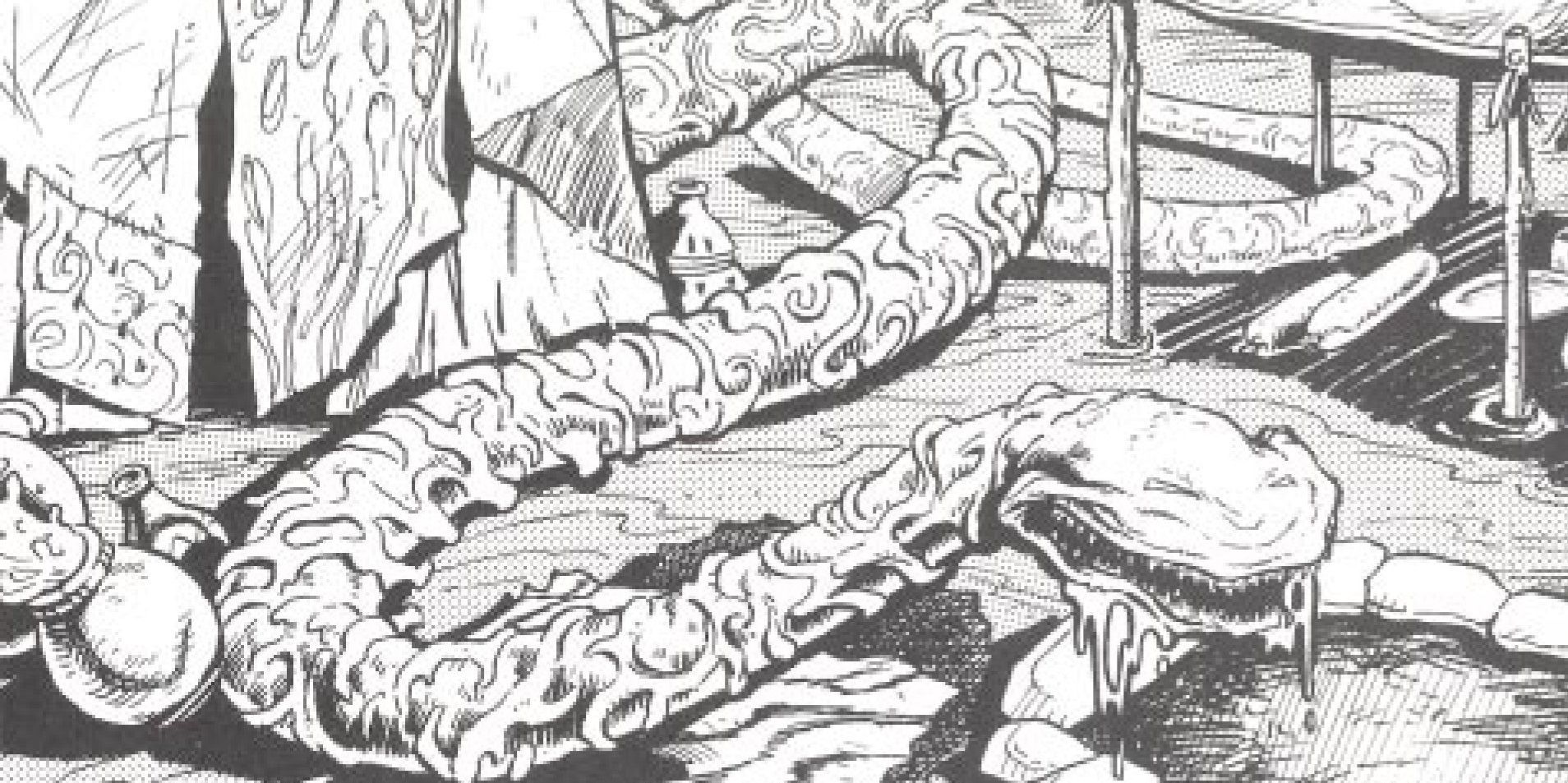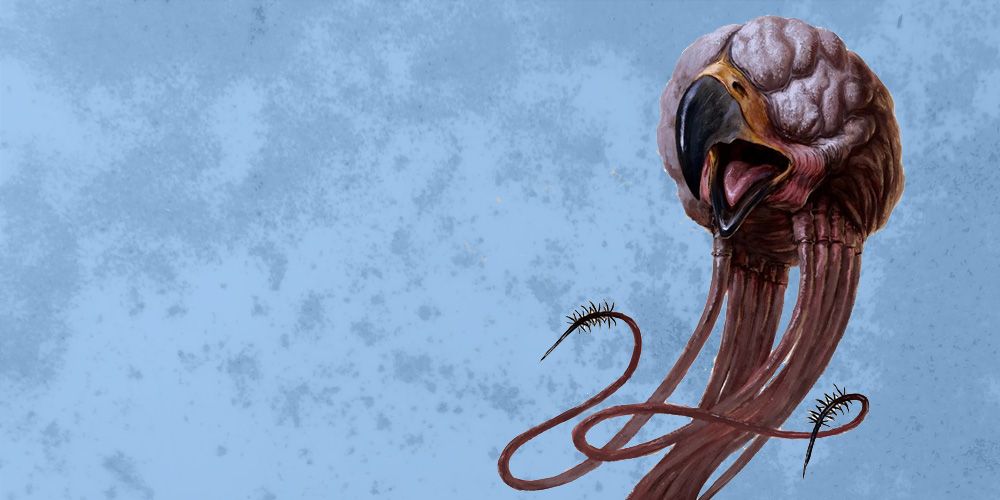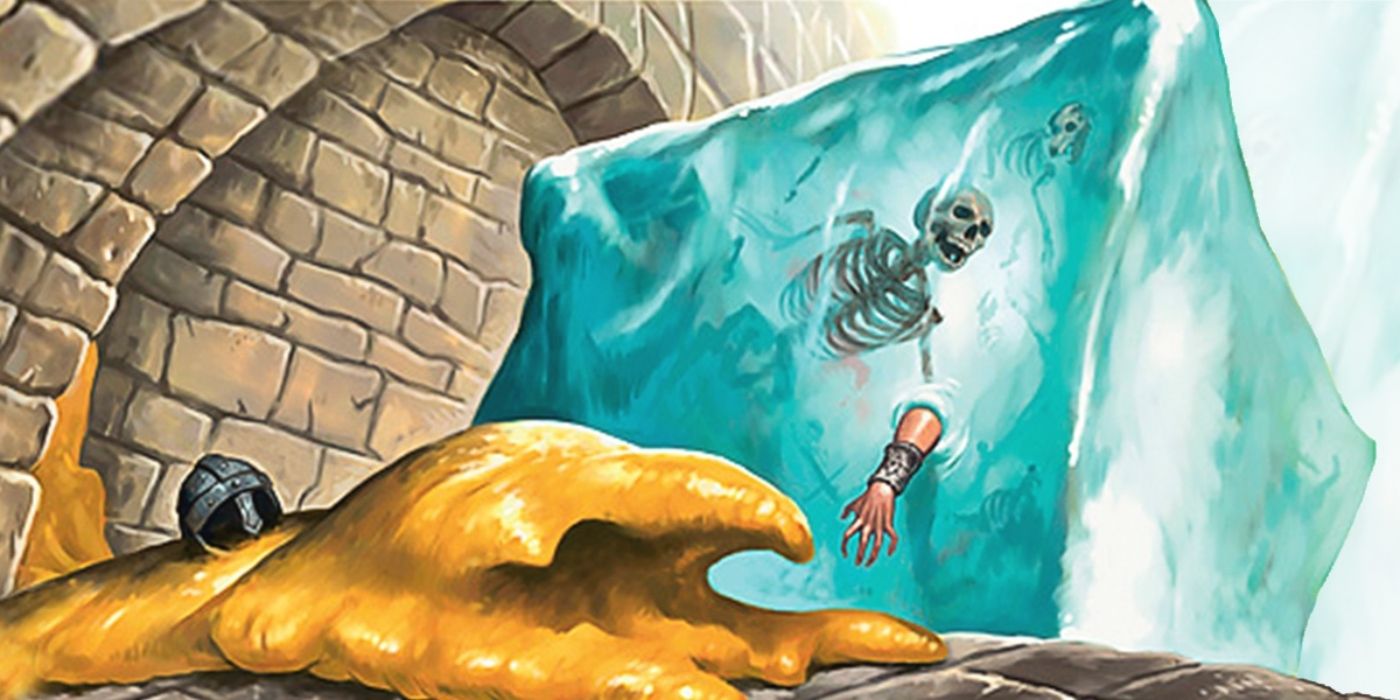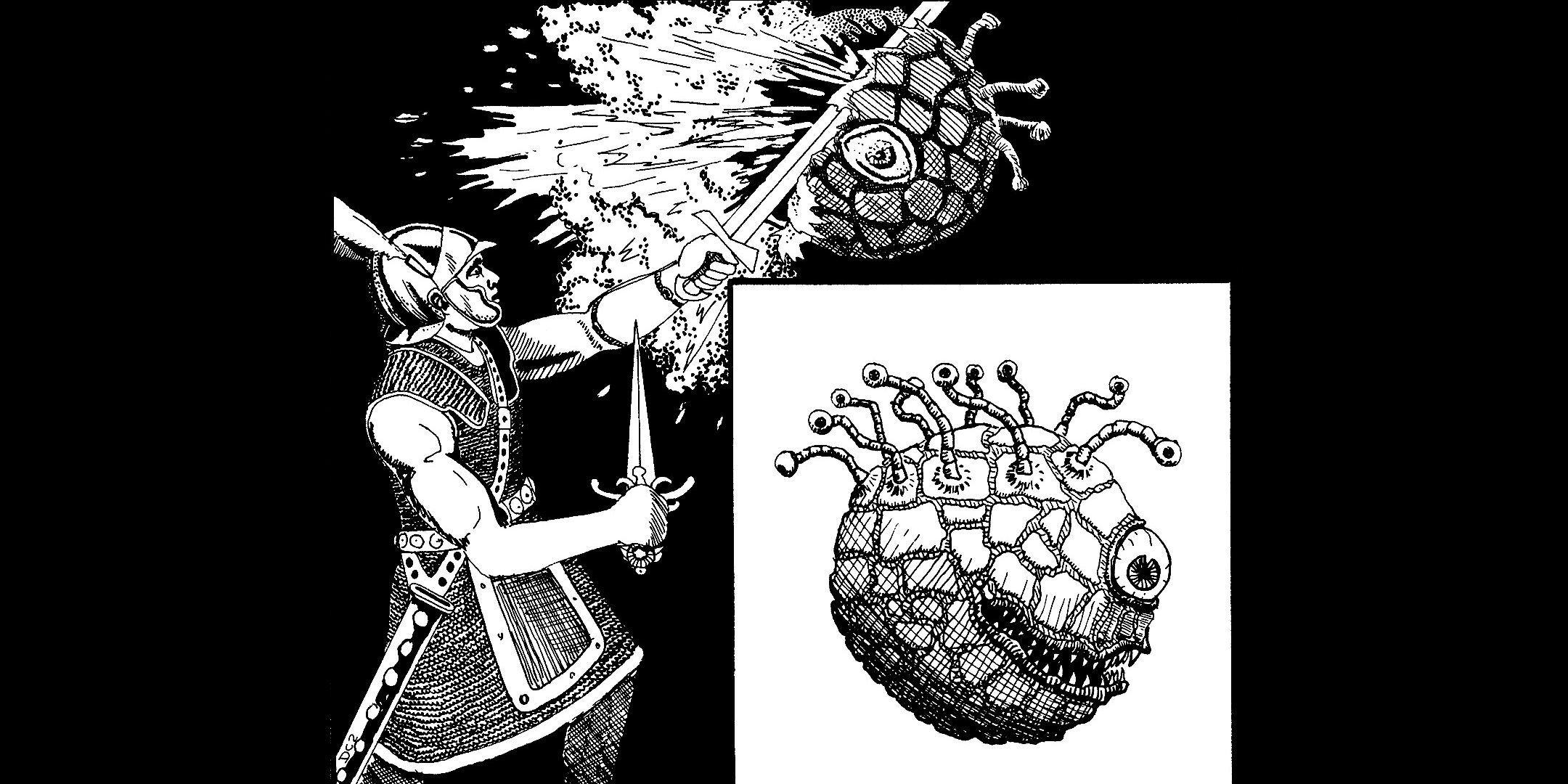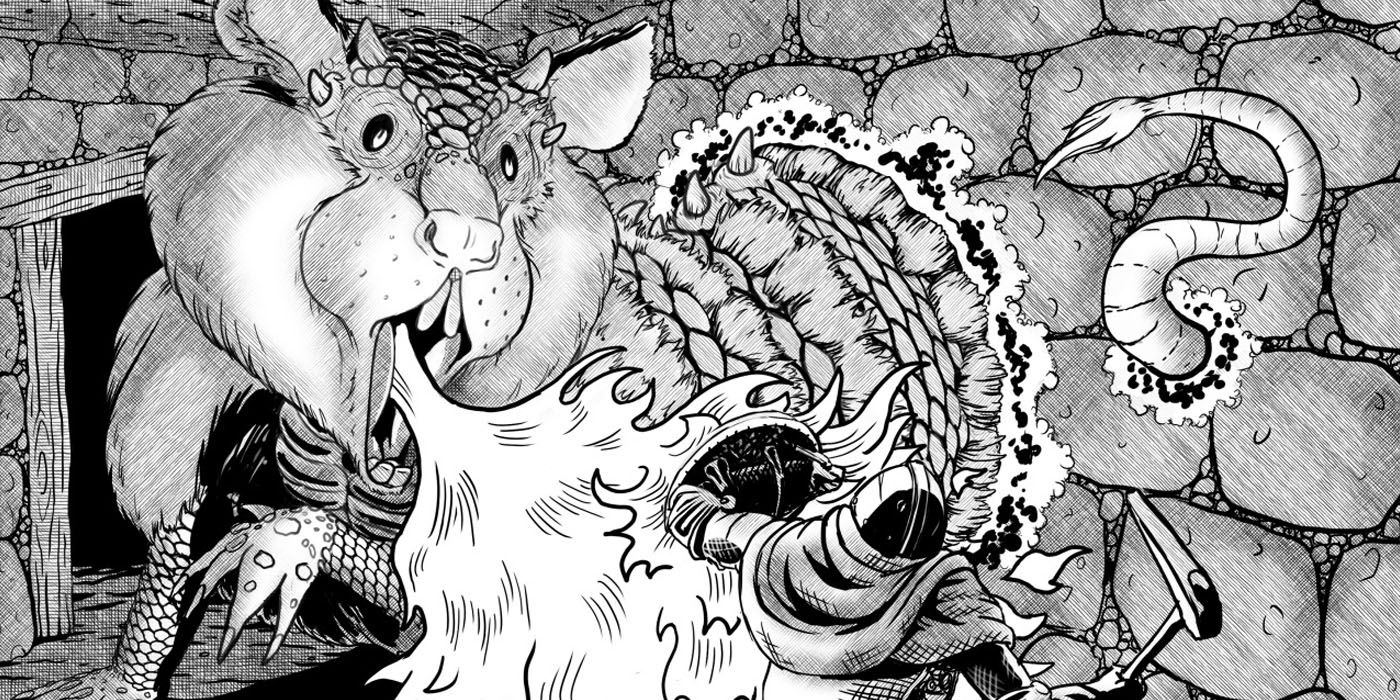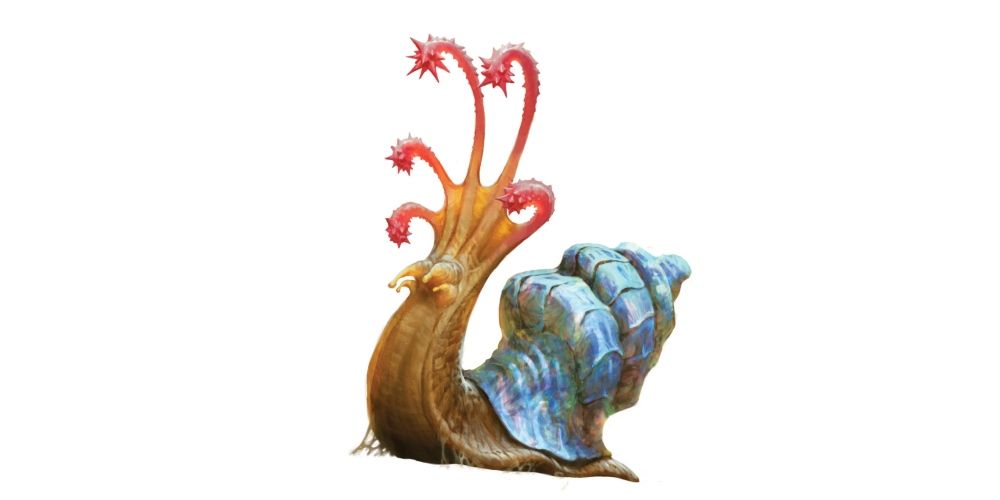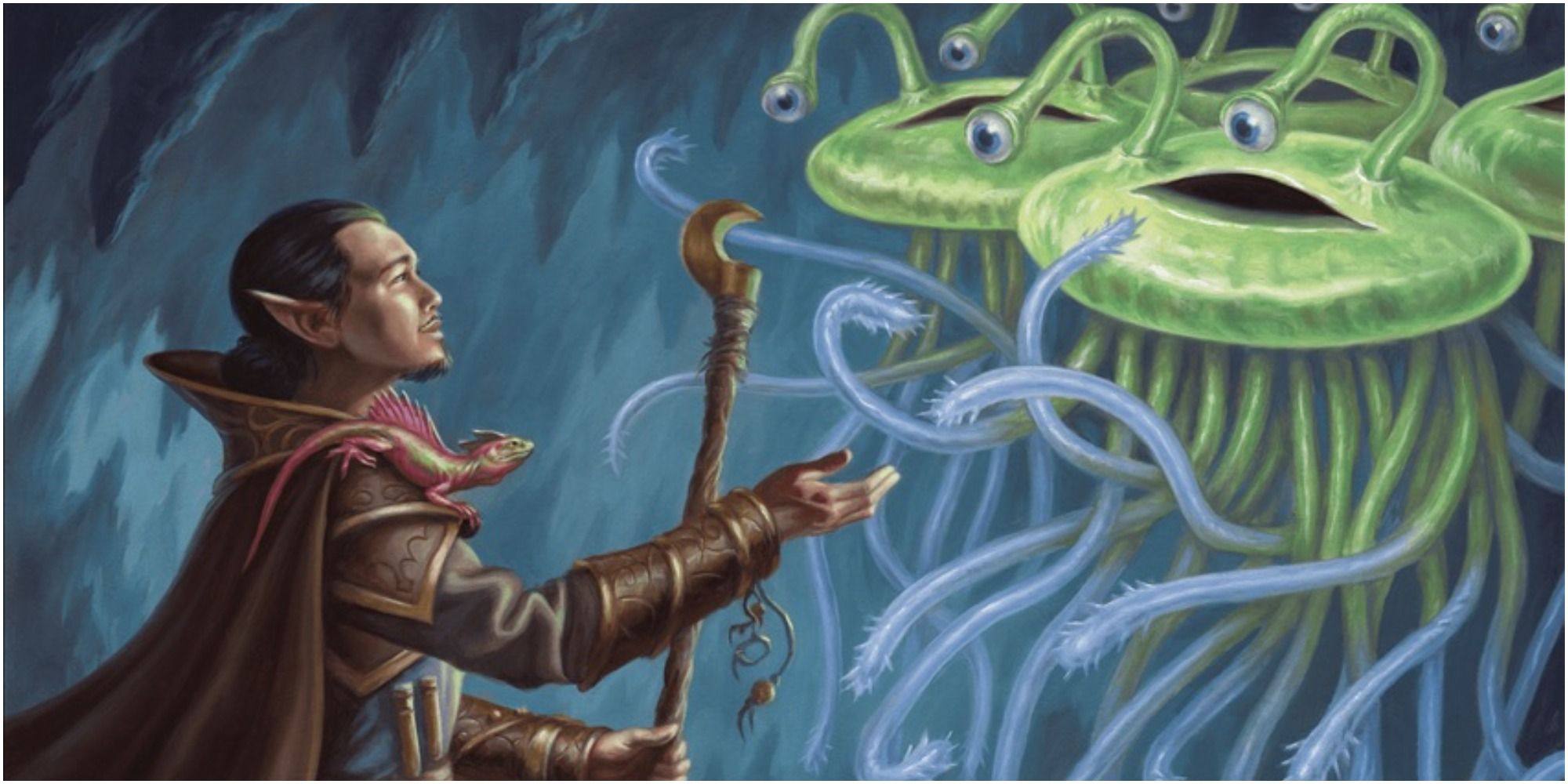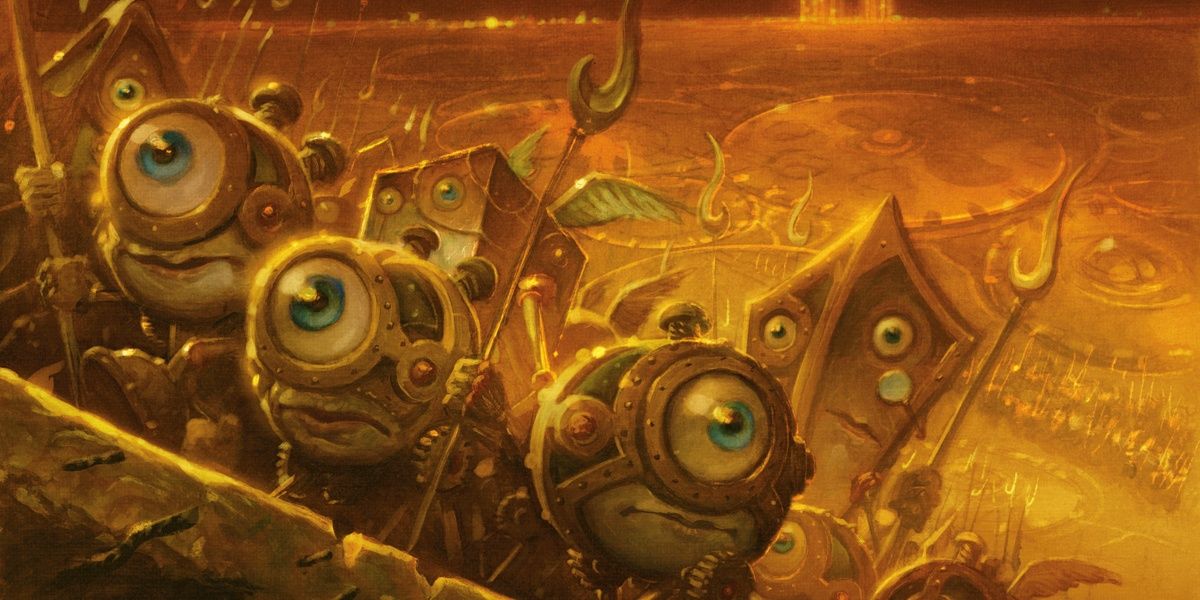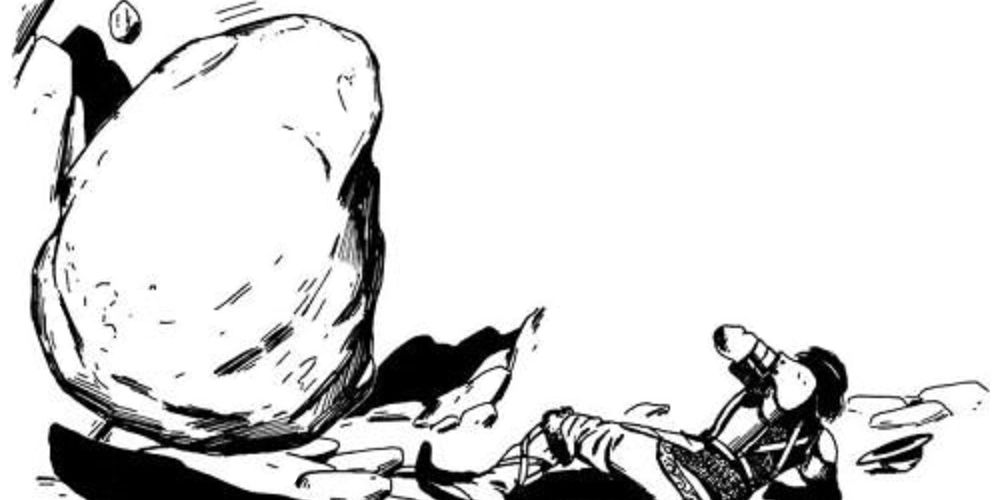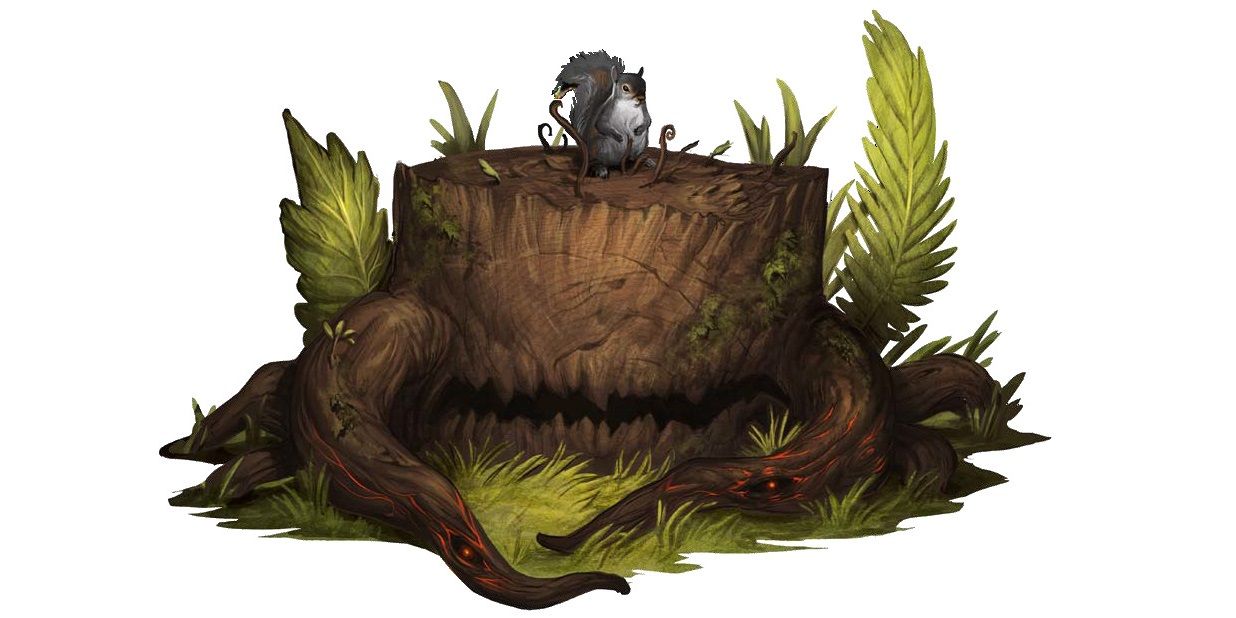Each Dungeons and Dragons The player has a story to tell about monsters, whether it’s about traversing hordes of goblins or stories about slaying mighty dragons. Naturally, the game has spawned many creatures of its own. From master manipulators like mind flayers to unusual threats like a rusty monster that forces the party to improvise. d&dEnemy folios have had a lot to offer.
But not all monsters are blessed with such iconic status. They may still have some level of infamy, but many have been lost to the annals of time. While a bunny duck doesn’t have much to offer in terms of TPK potential, it might be interesting to look back at the weirder monsters of d&dlong story.
10 Silk Wyrms haunt the skies of Athas
Silk wyrms possess a rather unusual set of abilities. They fly despite their thick shells using their psionic powers and can turn into serpentine shadows to stalk prey. When they secure a victim, instead of simply devouring it, they wrap it in layers of silk like a spider, draining its body of water over the course of days.
In a more normal setting, silk wyrms would likely be a feared threat. But this flying snake pales in comparison to some of the other threats in the world of Dark Sunfrom the sorcerer-kings that desecrate the landscape to the gaunt dragon that stalks the sands.
9 Grell are more than they seem
A wise adventurer should not be fooled by the grell’s comical appearance. Grells live to hunt, and between their vicious beak and poisonous tentacles, they are experts at their job. If their physical abilities weren’t enough, grells also possess great intellect, and the strongest of them can wield terrifying psychic powers against any enemy who underestimates them.
Grell first saw the light of day, or rather the darkness of a dungeon, in White Dwarf Magazine #12, premiering alongside the githyanki. While they’ve both gone through every edition of the game, the hive-dwelling, eternally hunting grell have never really caught on like their air-traveling cousins.
8 Gelatinous cubes keep dungeons clean
The Gelatinous Cube lives up to its name, literally being a nearly perfect cube of living jelly that slowly winds its way through corridors slowly collecting and consuming whatever gets stuck inside its body. Context is key to the cube, as ten foot by ten foot square hallways were ubiquitous in early d&dexplaining the strange shape of the creature.
Appearing in all versions of d&dand even Pioneer and other fantasy mediums, the jelly cube has had a long history and is by far the most famous slime in tabletop gaming. Usually not much of a threat on its own, a jelly cube can still be a fun encounter if a hero walks right into one by accident.
7 Gas spores use clever mimicry
Terrifying tales of eye tyrants slaughtering entire groups of heroes abound, as do tales of deep, dark dungeons built to lure fools to their doom. The Gas Spore somehow makes use of these, mimicking the shape of a bystander to fend off the weak and entice the unwary to hit it and release its spores into the air.
Such mimicry abounds in the real world, though primarily among animals, rather than plants or fungi. However, some flowers are known to use it. Hammer orchids resemble bees, while corpse flowers and rafflesia mimic the stench of rotting meat to attract various creatures.
6 Giant space hamsters roam the stars
Originally bred as beasts of burden and herded aboard a type of spell known as gnomish, giant space hamsters have since spread throughout the multiverse. It would be Boo, the loyal companion of the Minsc ranger, who would cement the species as a fan favorite, even if the diminutive creature is claimed to be just a “miniature” version.
While miniature giant space hamsters are the most well-known breed, a wide variety of others are also rumored to exist, ranging from the abominable furry giant space hamster to the cowardly tyrannical hamster rex. Perhaps the most threatening is the doppleganger giant space hamster of the long-named fire-breathing phase, possessing high intelligence and the ability to switch between planes well.
5 Flail snails are a magician’s worst enemy
Flail snails certainly have a catchy name, but there’s more to these beasts than just a memorable nickname. A snail, even a giant one, might not instill much fear, but the eponymous flails on its head can quickly change that, and their anti-magic shells also add a layer of strong defenses.
More intelligent than one would expect of a gastropod, flail snails can communicate with a patient enough to learn to do so, or with a wizard able to get past their reflective shell. While such knowledge is unlikely to reveal much, it does show that they are more than just beasts wandering aimlessly in caves.
4 Flumphs are unusually heroic
Without a doubt one of the strangest monsters. d&d has to offer, Flumph has also become emblematic of the sillier side of the game. As legitimate aberrations, flumphs would be weird enough, but they top it off with their bizarre shapes, resembling a flying jellyfish with eye stalks on top and spikes hidden inside its bell.
Flumph’s ecology only adds more mystery, with legends that they first came from beyond the planet, only to later dwell in the darkest of caves. Flumphs was also one of many classic monsters to receive a cameo in Magic: The Gathering’s Set “Adventures in the Forgotten Realms”, along with creatures such as trolls and dragons.
3 Modrons believes in a perfect geometric order
Modrons are beings of pure order, their society spread across the law-neutral plane of Mechanus, a home they also share with the intimidating inevitability and enigmatic mechanical spirits that tend the endless mechanical cogs that make up that world.
Modron physiology takes the form of geometric shapes, the most common being spheres, cubes, and pyramids, all with a specific number of limbs, eyes, and faces. If this wasn’t strange enough, his psychology seems to depend on his form: the more complex his form, the more complex his mind, and the less robotic his personality.
two Bowlers are a puzzling living trap
Not a creature that throws heroes, but rather throws them using its own heavy, hard body, the bowler is a pretty unique class of mime. Stealthy despite their size, they take a long time to reach full speed when pursuing their prey and can only be heard once they get surprisingly close.
Launchers are part of a family of living traps that were popular in the early years of d&d. While mimicry is a classic and creatures like cloakers and darkcloaks take inspiration from this group, it was monsters like the trapper or stalker above, a living floor and ceiling respectively, that obsessed players long ago. .
1 The wolf in sheep’s clothing seems harmless at first
few creatures of d&d they have earned the title of “misfit monster” as the wolf in sheep’s clothing. It seems innocuous enough at first, a bunny, squirrel or other small animal standing on a stump, but the real horror quickly unfolds when one unlucky adventurer gets too close, when the roots of the stump begin to lash and a terrifying maw is revealed.
The wolf in sheep’s clothing first appeared in Barrier Peaks Expeditionan adventure that saw standard d&d heroes who dive into a downed spaceship to stop attacks on nearby Geoff’s Dukedom. Along the way, they encounter numerous robots, strange monsters, and strange alien technologies not seen anywhere else in the world. gray hawk.

